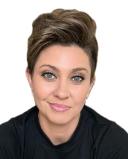Identity
The Paradox of Women’s Aging
Is it possible to feel more and less confident at the same time?
Posted April 19, 2024 Reviewed by Tyler Woods
Key points
- As women approach middle age, there are often conflicting feelings to navigate.
- Shifting the narrative about women’s aging may mean doing the deep inner work of healing our self-image.
- When we normalize what healthy aging looks like, we become better advocates for ourselves and other women.
As I approach my 40th birthday next year, I find myself bombarded with targeted ads everywhere I go online, all of them boasting about how they can make me look younger, healthier, and more beautiful.
I have reached the age when women are supposed to start hating our faces and bodies. We are meant to become preoccupied with looking trim and youthful, trading our time and money for the latest anti-aging products and procedures that will have us looking 20 again in no time.
I’ll be honest: I feel conflicted about the messages I receive about my age. After spending a lot of time talking to women my age and older, I realize that my feelings are quite common. Entering our 40s and beyond is a time of many contradictions, it seems.
On one hand, many women report feeling like they have finally found their true selves as they exit their 20s and 30s, having discovered an authenticity that is free from the insecurities and expectations of our youth (Casado-Gual, Dominguez, & Worsfold, 2016; Greer, 1991; Stončikaitė, 2021). On the other hand, some women also feel discarded, marginalized, or invisible as they age (Calasanti & Slevin, 2001; Gullette, 2004). No longer the object of constant sexual desire like they were in their youth, they struggle to find a new identity that doesn’t live under the perpetual scrutiny of the male gaze.
Like many women, I sometimes feel torn between the radiant and ever-growing confidence I feel as I get older and the sometimes crushing weight of insecurity that comes with my changing body, face, and skin. I can’t seem to help pinching an unwanted roll or a newfound wrinkle. The urge to pluck the increasingly abundant grey hairs is strong.
How is it possible to feel both more and less confident at the same time?
The Woman Behind the Mask
There is a decades-old term I only recently learned of that helps explain this strange paradox. It’s called the mask of aging (Featherstone & Hepworth, 1999).
The mask of aging represents the phenomenological experience of some women as they age, in which they cannot reconcile their inner youthful selves with their aging external bodies. This contrast between how they feel and how they look can be disorienting and upsetting.
On the inside, they feel young and vibrant. Having also gained the benefit of wisdom that life experience brings, they now feel both young and wise—a winning combination that is sure to raise self-esteem and self-image.
But when they gaze in the mirror and see a woman who looks quite wise but not very young, the mismatch is difficult to accept. Their reflection of this aging woman is experienced as a betrayal of the young woman to whom their inner identity is bound. This incongruence becomes a threat to their self-worth.
I believe this is why so many of us, myself included, struggle with our appearance as we age. We live in a culture that insists we stay perpetually youthful or lose our value (Gullett, 2004). Because we still feel youthful, the idea of being considered less valuable than we were in our 20s is unacceptable.
As a result, we often endure costly and painful cosmetic procedures, over-commit to time-consuming skincare routines, and try to squeeze our changing bodies into clothes that no longer suit us. Rather than embrace the freedom that comes with finding our authentic selves as we age, we regress into futile anti-aging efforts that can do little more than buy us time. They’ll never turn back the clock, nor will they actually bring us the positive self-image we seek.
Entering our 40s and beyond can be a time of immense liberation. Freed from the constant sexual objectification many women experience in our youth, we can turn all our outward focus inward. We can begin healing our hearts and minds, make time for interests we neglected in our younger years, invest in connecting with our loved ones, and perhaps for the first time we can connect with our innermost parts, too. But that work will mean forsaking the patriarchal conditioning about our worth and value as we age.
Shifting the Narrative
It’s time for feminist women to begin reshaping the narrative around aging. And perhaps that work is an inside job. I sometimes wonder if many of us need to do some deep healing of our own self-image and self-worth before we begin trying to change our culture’s long-held stereotypes of women as they age. Like any kind of advocacy work, sometimes the first step is untethering ourselves from the indoctrination we've received since youth. To accomplish that, there are some truths we need to embrace:
- The male gaze is oppressive and says nothing about our actual worth.
- Freedom from sexual objectification is not a symbol of our diminishing worth, but rather a symbol of our culture’s toxic obsession with youth.
- There is nothing wrong with seeing a mismatch between our inner feelings and our outer appearance. Bodies and faces change as we age, but our inner psychological world can stay youthful as long as we desire.
- Aging is healthy and normal, despite what the multi-billion-dollar anti-aging industry wants to tell women.
- Being vocal about our needs and experiences is how we normalize healthy attitudes toward women’s aging and put an end to our discrimination, marginalization, and erasure.
When we learn to untether our identity and self-worth from our culture’s sick obsession with youth, we will become better advocates for ourselves and for women more broadly.
We will not be invisible. We will be free.
Facebook image: Daisy Daisy/Shutterstock
References
Calasanti, T. M., & Slevin, K.F. (2001). Gender, Social Inequalities, and Aging. Walnut Creek, CA: AltaMira Press.
Casado-Gual, N., E. Domínguez, B.; & Worsfold, J. (2016). Literary Creativity and the Older Woman Writer: A Collection of Critical Essays. Bern: Peter Lang.
Featherstone, M. & Hepworth, M. (1999). The Mask of Aging and the Postmodern Life Course. pp. 371–389. In Feathersone, M., M. Hepworth, B. Turner (eds.). The Body: Social and Cultural Theory. London: Sage.
Greer, G. (1991). The Change: Women, Ageing and the Menopause. London: Hamish Hamilton.
Gullette, M. M. (2004). Aged by Culture. Chicago, IL: Chicago University Press.
Stončikaitė, I. (2021). Age, gender and feminism: addressing the gap from literary and cultural perspectives. Gender a výzkum, 22(1), 59-77.




